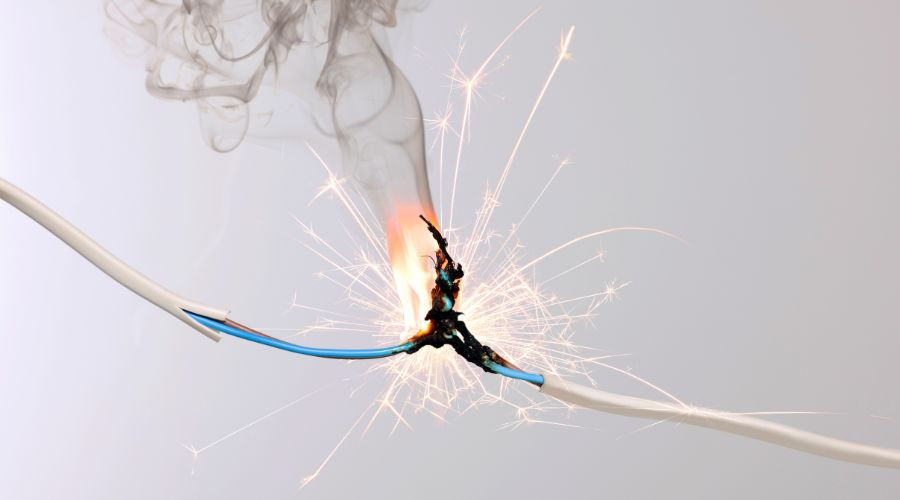Spot Problems With the Electrical Wiring to Keep the Home Safe
Faulty electrical wiring can cause costly damage and lead to serious safety risks. This post reveals early signs of wiring issues and the hidden dangers they pose, offering guidance to help maintain a safe property. With clear advice on recognizing electrical hazards and preventing potential disasters, this information can support efforts to tackle urgent problems before they escalate. Here’s how to ensure a safer, worry-free living space.
Signs to Repair or Replace the Wiring
 Recognizing the signs of faulty electrical wiring is crucial for preventing hazards and avoiding expensive damage. Electrical systems often provide warning signals before major problems occur. Ignoring these indicators may lead to dangerous situations.
Recognizing the signs of faulty electrical wiring is crucial for preventing hazards and avoiding expensive damage. Electrical systems often provide warning signals before major problems occur. Ignoring these indicators may lead to dangerous situations.
Frequent circuit breaker trips are among the most common red flags. Repeated tripping during normal appliance use can indicate an overloaded system or deteriorating connections. Circuit breakers act as a safeguard against overheating. Warm or hot outlets and switch plates suggest excessive current flow through damaged wiring—regular checks are recommended. Discolored outlets with yellowish or brownish scorch marks signal electrical arcing.
Buzzing or crackling sounds from outlets or switches, along with a burning plastic smell, require immediate attention from a licensed electrician. Dimming or flickering lights during appliance use suggest the wiring may be insufficient for current demands. Other signs include inconsistent outlet function, electric shocks from appliances, or visible rodent damage in older wiring systems. Electrical issues rarely improve on their own and often worsen over time, significantly raising fire risk.
Dangers of Faulty Wiring
 Faulty wiring presents severe fire hazards capable of devastating homes and threatening lives without warning. Deteriorated wires, loose connections, or substandard installations dramatically increase the risk of electrical fires. Insulation may degrade over time. According to the National Fire Protection Association, electrical failures or malfunctions accounted for 13% of residential fires between 2015–2019.
Faulty wiring presents severe fire hazards capable of devastating homes and threatening lives without warning. Deteriorated wires, loose connections, or substandard installations dramatically increase the risk of electrical fires. Insulation may degrade over time. According to the National Fire Protection Association, electrical failures or malfunctions accounted for 13% of residential fires between 2015–2019.
Damaged wiring can generate excessive heat that ignites flammable materials through thermal runaway. This occurs when current encounters resistance in compromised wires, producing temperatures over 1,000°F. Scorched outlets or switch plates indicate dangerous conditions. Arc faults—where electricity jumps across gaps—generate intense heat, potentially igniting building materials within seconds.
In addition to fire risks, faulty wiring introduces the danger of electrical shocks. Homes constructed with aluminum wiring between 1965 and 1973 face elevated risks due to aluminum's tendency to expand and contract, loosening connections over time. Electrical fires often start inside walls, making early detection difficult. Professional inspection by a licensed electrician offers the most effective defense against these hidden threats.
The Risks of Aluminum Wiring
Aluminum electrical wiring became common in homes built between 1965 and 1973, driven by a surge in copper prices. Though initially viewed as a cost-saving solution, aluminum wiring has since been linked to significantly higher fire risks. According to the Consumer Product Safety Commission, homes with aluminum wiring are up to 55 times more likely to reach fire hazard conditions at connections and terminals.
The problem stems from aluminum’s physical properties. Compared to copper, aluminum expands and contracts more with temperature shifts. This movement gradually loosens connections, leading to increased resistance and heat. Heat accelerates oxidation, creating a cycle that raises the risk of ignition.
For homes built during this period, professional inspection is essential. Electricians can identify key signs of aluminum wiring deterioration, such as:
- Hot switch plates or outlets
- Flickering lights without bulb-related issues
- Burning odors near electrical fixtures
- Discolored outlet covers or plugs
Instead of full rewiring, many choose a Consumer Product Safety Commission-approved repair method called “pigtailing.” This technique connects short copper wire segments to aluminum wiring using special connectors, improving safety without major renovations. Identifying the type of wiring in a home can offer significant peace of mind and potentially prevent disaster.
About All Services
All Services is a trusted electric company serving Northwest Indiana and beyond. They offer upfront pricing, quick response, and a clean guarantee. Call them for wiring repair & replacement in Crown Point, IN.



